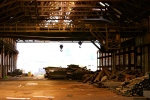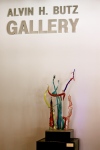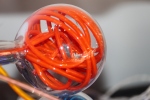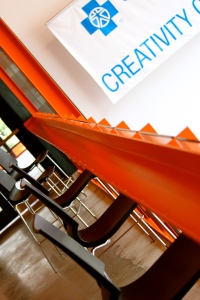 Throughout college, you hear a lot of talk about saving the world, or at least changing it for the better. And this is always comes across as a noble endeavor. But maybe these are the wrong words to be using. Maybe we should start talking about loving the world. And this always comes across as an unrealistic ideal. It is true that there is a lot of hatred and meanness out there. It makes sense then, to counter it with love and kindness.
Throughout college, you hear a lot of talk about saving the world, or at least changing it for the better. And this is always comes across as a noble endeavor. But maybe these are the wrong words to be using. Maybe we should start talking about loving the world. And this always comes across as an unrealistic ideal. It is true that there is a lot of hatred and meanness out there. It makes sense then, to counter it with love and kindness.
Changing and saving imply that one does not actually enjoy the place they are in nor the things they are doing. Loving accepts, and more importantly it liberates. It is simply a starting point, a first step. And this is exactly where I am with my relationship with Bethlehem. For five years, I wasn’t accepting nor appreciative of the history and the culture that once was, but also never consider what could be. I’m not trying to change Bethlehem nor am I trying to save it. I know this will happen on its own time and in its own way. What I’m trying to do, is love it simply because it exists.
In order to do this, I first needed to do some research. I needed to understand the history if I was to make any forward progress. And what do you know! SteelStacks provided me with a wonderful two-hour walking tour through the ruins of the old Steel Mill. I find it no coincidence it was in the midst of its transformation, with the new PBS building putting on its finishing touches and the Levitt Pavilion breaking ground. Terry Larimer, Lehigh class of ’68 and former sports editor at The Morning Call, was my hard-hat-wearing tour guide. He offered me my own to wear during the tour, explaining that all the rookies who worked at the plant were identified by the red X painted on top. Even though I am new to all of this, I politely declined and he said it was okay.
putting on its finishing touches and the Levitt Pavilion breaking ground. Terry Larimer, Lehigh class of ’68 and former sports editor at The Morning Call, was my hard-hat-wearing tour guide. He offered me my own to wear during the tour, explaining that all the rookies who worked at the plant were identified by the red X painted on top. Even though I am new to all of this, I politely declined and he said it was okay.
The tour was two hours only because I was the only person who attended it. All the walking tours are available everyday at 12:45 p.m. but I understand that everyone in Bethlehem is wearing red X’s above their heads. This is new to them, too. Soon, walking tour information will be common knowledge, but for now, I was not in the least bit upset that I had a private tour of Bethlehem Steel.
 Without giving it all away, because I want each of you to do some active research for yourselves, there are some incredible stories streamlining the foundations that this ArtsQuest Center now stands on. What I found most interesting, besides all of the facts and figures that Bethlehem Steel is most notable for, including the cities it built, was how much of a secret operation this all seemed. The company was an entity unto itself. Self-sustaining, self-operating, self-made. It just so happened it was located in Bethlehem. And the company made a conscious effort to keep out the community even though the community was what kept it alive.
Without giving it all away, because I want each of you to do some active research for yourselves, there are some incredible stories streamlining the foundations that this ArtsQuest Center now stands on. What I found most interesting, besides all of the facts and figures that Bethlehem Steel is most notable for, including the cities it built, was how much of a secret operation this all seemed. The company was an entity unto itself. Self-sustaining, self-operating, self-made. It just so happened it was located in Bethlehem. And the company made a conscious effort to keep out the community even though the community was what kept it alive.
This makes sense to me, knowing that this distant relationship still exists between the university and the community. This is nothing new, I thought. This disconnect was here long before I was. The Bethlehem Steel Company often hired Lehigh graduates as managers while the nearly one-third of the people living in the city were hired as workers. The hours were long, the benefits were scarce, and injuries were not spoken of. The only way The Morning Call found out about what was going on at the mill was if someone got hurt bad enough to be sent to St. Luke’s hospital. Otherwise, the workers spent their 17-hour days breathing in all kinds of toxins in order to produce tons of steel. Their only day off was every other Sunday.
Meanwhile, the executives, spent most of their time sitting up high in their office buildings doing “work” or playing golf at the Saucon Valley Country Club. Does this sound familiar? Eugene Grace may ring a bell. He was a Lehigh graduate and eventually became the President of Bethlehem Steel from 1916-1945. He was responsible for the company’s radicalgrowth, striving during the war years as the main supplier for the Navy while expanding to bridge-building during peacetime. During this time, he was also on the Board of Trustees at Lehigh. I say this with bold and italics because this is also when the university saw its biggest growth spurt. And you know those Lehigh people,always up to something. No doubt trying to save and change the world. And no doubt, they have already made huge progress for better learning. While Bethlehem Steel did not survive, the truth is the university has continued to thrive. They are no strangers to sustaining change. The difference now, is the effort to include the city.
company’s radicalgrowth, striving during the war years as the main supplier for the Navy while expanding to bridge-building during peacetime. During this time, he was also on the Board of Trustees at Lehigh. I say this with bold and italics because this is also when the university saw its biggest growth spurt. And you know those Lehigh people,always up to something. No doubt trying to save and change the world. And no doubt, they have already made huge progress for better learning. While Bethlehem Steel did not survive, the truth is the university has continued to thrive. They are no strangers to sustaining change. The difference now, is the effort to include the city.
 As I look forward, I understand why things are the way they are. The lack of communication between the university environment and the Bethlehem community in 2011 is no different from the estranged dynamic between the workers and the executives during the early decades of the 1900s. The only difference I see, is that there was zero conversation going on then, especially between a secretive company and the surrounding community. There was a reason it was built like a fortress just the same way one could argue there’s a reason Lehigh was built on the side of a mountain. But there is chatter now, and however low a rumbling it has been, it is beginning to get a little louder.
As I look forward, I understand why things are the way they are. The lack of communication between the university environment and the Bethlehem community in 2011 is no different from the estranged dynamic between the workers and the executives during the early decades of the 1900s. The only difference I see, is that there was zero conversation going on then, especially between a secretive company and the surrounding community. There was a reason it was built like a fortress just the same way one could argue there’s a reason Lehigh was built on the side of a mountain. But there is chatter now, and however low a rumbling it has been, it is beginning to get a little louder.
Today, more and more people are getting involved in a conversation that has started long before I arrived. I reckon it has something to do with people accepting the city in which they live, understanding the reasons for its company’s downfall, and proceeding with kindness during this transformation. Like every awkward teenager, Bethlehem just needs some love.






















You must be logged in to post a comment.